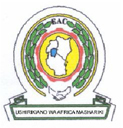
In order to promote public education and public safety, equal justice for all, a better informed citizenry, the rule of law, world trade and world peace, this legal document is hereby made available on a noncommercial basis, as it is the right of all humans to know and speak the laws that govern them.

EAS 247:2001
ICS 59.080.10
EAST AFRICAN COMMUNITY
© EAC 2001
First Edition 2001
iDevelopment of the East African Standards has been necessitated by the need for harmonizing requirements governing quality of products and services in East Africa. It is envisaged that through harmonized standardization, trade barriers which are encountered when goods and services are exchanged within the Community will be removed.
In order to achieve this objective, the Partner States in the Community through their National Bureaux of Standards, have established an East African Standards Committee.
The Committee is composed of representatives of the National Standards Bodies in Partner States, together with the representatives from the private sectors and consumer organizations. Draft East African Standards are circulated to stakeholders through the National Standards Bodies in the Partner States. The comments received are discussed and incorporated before finalization of standards, in accordance with the procedures of the Community.
East African Standards are subject to review, to keep pace with technological advances. Users of the East African Standards are therefore expected to ensure that they always have the latest versions of the standards they are implementing.
© East African Community 2001 — All rights reserved*
East African Community
P O Box 1096
Arusha
Tanzania
Tel: 255 27 2504253/8
Fax: 255-27-2504481/2504255
E-Mail: eac@eachq.org
Web: www.each.int
*© 2001 EAC — All rights of exploitation in any form and by any means reserved worldwide for EAC Partner States’ NSBs.
iiTextiles — Tests for colourfastness — Colour fastness to peroxide washing — Sodium perborate
This East African Standard is intended for determining the resistance of the colour of textiles of all kinds, and all forms to the action of baths containing sodium perborate.
A specimen of the textile in contact with specified adjacent fabrics is mechanically agitated under specified conditions of time and temperature in a solution specified in clause 3.2 then rinsed and dried. The change in colour of the specimen and the staining of the adjacent fabrics are assessed with the grey scales.
Suitable mechanical device (see notes) consisting of a water bath containing a rotatable shaft which supports, radially, glass or stainless steel containers (75 mm ± 5 mm diameter x 125 mm ± 10 mm high) of approximately 550 ml ± 50 ml capacity, the bottom of the containers being 45 mm ± 10 mm from the centre of the shaft. The shaft/container is rotated at a frequency of 40 min-1 ± 2 min-1. The temperature of the water bath is thermostatically controlled to maintain the test solutions at the prescribed temperature ± 2°.
NOTE Suitable testing devices are:
Solution containing the following:
Two undyed fabrics of plain weave, free from size and other finishing materials, bleached without brightening agents each measuring 10 cm x 4 cm, one piece made of the same kind of fibre as that of the textile to be tested, or that predominating in the case of blends, the second piece made of the fibre as indicated below or, in the case of blends, of the kind of fibre second in order of predominance, or as otherwise specified.
1| If the first piece is | the second piece should be |
| cotton | wool |
| wool | cotton |
| silk | cotton |
| linen | cotton |
| viscose | wool |
| acetate | viscose |
| polyamide | wool or viscose |
| polyester | wool or cotton |
| acrylic | wool or cotton |
Grey scales for assessing change in colour and staining in accordance with the relevant East African Standards.
Steel balls — 25 stainless steel balls, 6 mm in diameter.
If the textile to be tested is fabric, place a specimen 10 cm x 4 cm between the two adjacent fabrics (3.3) and sew along all four sides to form a composite specimen.
If the textile to be tested is yarn, knit it into fabric and treat it as in 4.1, or form a layer of parallel lengths of it between the two adjacent fabrics (3.3), the amount of yarn taken being approximately equal to half the combined mass of the adjacent fabrics. Sew along all four sides to hold the yarn in place and to form a composite specimen.
If the textile to be tested is loose fibre, comb and compress an amount approximately equal to half the combined mass of the sheet between the two adjacent fabrics and sew along all four sides to hold the fibre in place or to form a composite specimen.
Place the composite specimen and steel balls (3.5) in the container and add the necessary amount of perborate solution (3.2), previously heated to 60 °C ± 2 °C, to give a liquor ratio of 50:1. Place the containers in the heated bath (clause 3.1) so that the contents of the containers are heated to 95 °C within 10 min.
Treat the composite specimen at 95 °C ± 2°C for 20 min.
Remove the composite specimen , rinse it twice in cold distilled water and then in cold running tap water for 10 min, and squeeze it. Open out the composite specimen by breaking the stitching on all sides except one of the shorter sides and dry it by hanging it in air at a temperature not exceeding 60 °C, with the three parts in contact only at the remaining line of stitching.
Assess the change in colour of the specimen and staining of the adjacent fabrics with the grey scales (3.4).
Report the numerical ratings of the change in colour of the test specimen and for the staining of each kind of adjacent fabric used.
2